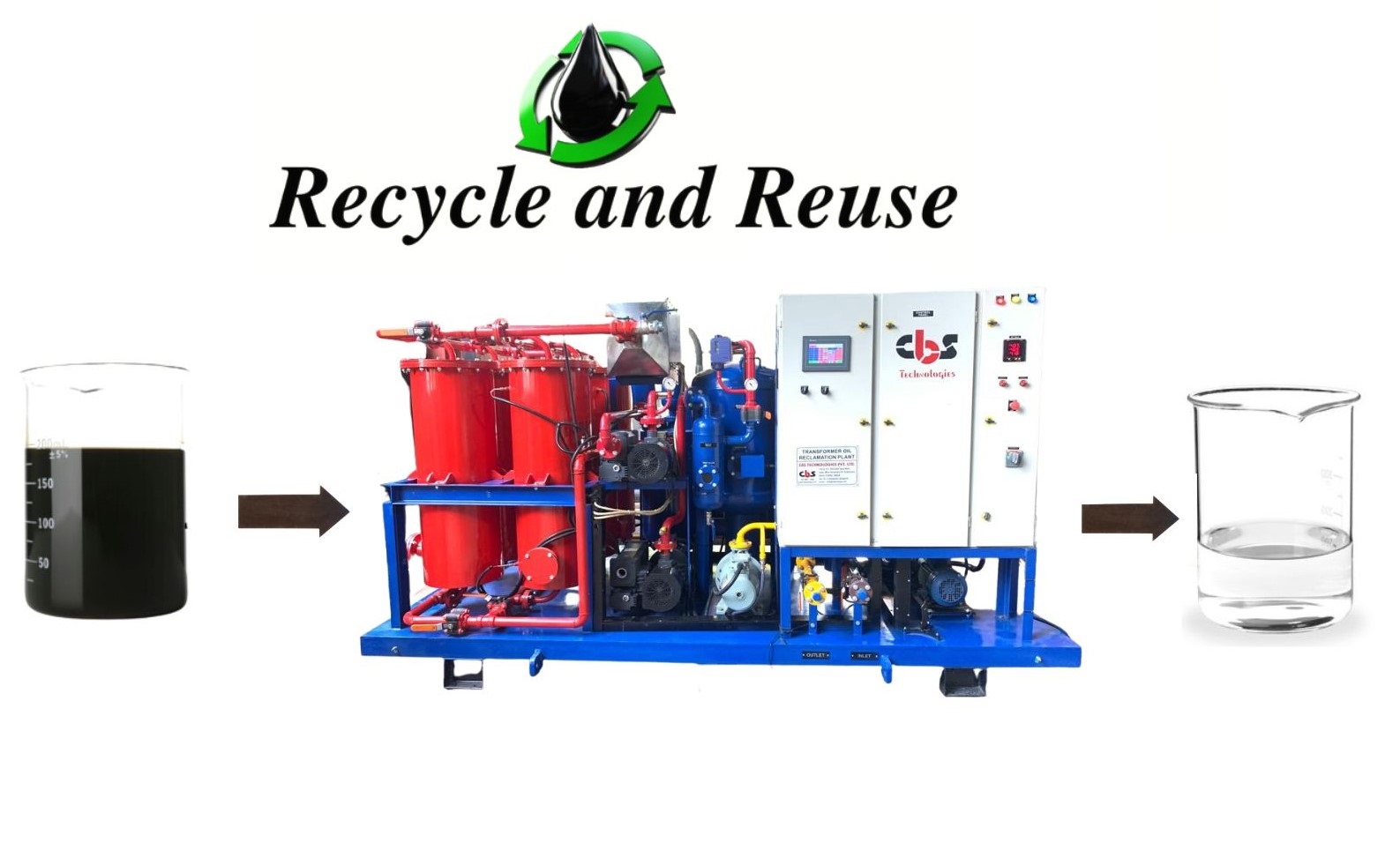Just How Regenerated Transformer Oil Expands Transformer Life-span
The duty of transformer oil is crucial in ensuring the dependability and longevity of transformers, offering as both an insulator and coolant. Regrowed transformer oil supplies an engaging solution to boost these features by effectively removing unsafe impurities that jeopardize efficiency.
Value of Transformer Oil
Transformer oil plays a crucial role in the effective operation of electrical transformers. It largely offers as a shielding tool, stopping electric discharges and ensuring that elements operate safely under high voltage problems. The oil's dielectric residential or commercial properties are basic to preserving the stability of the transformer, as they decrease the risk of failures that can cause tragic cases or pricey downtimes.
Along with its shielding capabilities, transformer oil additionally functions as a coolant. As transformers run, they create warm that has to be dissipated to avoid getting too hot and subsequent damage. The oil flows within the transformer, transferring and absorbing heat far from important elements, consequently maintaining ideal operating temperatures.
Moreover, transformer oil acts as a barrier against moisture and pollutants, which can jeopardize the efficiency and longevity of the transformer. Its chemical properties help in counteracting acids and various other by-products that might create in time, adding to the overall wellness of the electric system.
Benefits of Regenerated Oil

Furthermore, regenerated transformer oil has a reduced level of impurities, consisting of fragments and pollutants that can break down performance. This pureness not just enhances the oil's thermal conductivity however likewise expands the functional life-span of transformers by minimizing overheating dangers. The boosted thermal stability of restored oil guarantees regular efficiency also under high operating temperatures, which is crucial for preserving transformer effectiveness.
Another advantage is its environmental impact. Restored oil promotes sustainability by decreasing waste and the need for new oil production, consequently decreasing the carbon footprint connected with transformer upkeep. Regenerated Transformer Oil. The longevity of regrowed oil translates to lower maintenance costs over time, as fewer oil adjustments and much less frequent equipment downtime are required.
Refine of Oil Regeneration
The regrowth of transformer oil involves an organized process designed to bring back the oil's initial residential properties and boost its efficiency. This process typically begins with the elimination of the made use of oil from the transformer, which is after that based on different purification strategies.
The initial step in the regrowth process is the purification, where strong contaminants such as metal, dust, and sludge bits are removed. This is often followed by vacuum distillation, which aids to eliminate dampness and volatile substances, thus boosting the oil's dielectric toughness.

Influence on Transformer Efficiency
Restoring the residential or commercial properties of regenerated transformer oil dramatically influences the total performance of transformers. Boosted dielectric stamina is just one of the most essential advantages, as it permits better insulation and minimizes the possibility of electric break down. This improvement leads to a more steady procedure under high voltage conditions, inevitably leading to enhanced performance.
In addition, the elimination of contaminants and destruction items during the regrowth process minimizes the danger of overheating. Cleanser oil facilitates much better warmth dissipation, which is important for keeping optimal operating temperature levels. As a consequence, the thermal efficiency of the transformer is improved, enabling greater loads without compromising reliability.
Moreover, the chemical stability of restored Visit Website oil guarantees long term operational life. It stands up to oxidation and deterioration, decreasing the frequency of maintenance treatments and oil replacement. This stability not only contributes to improved efficiency however additionally lines up with sustainability goals by minimizing waste.
Future of Transformer Maintenance
As developments in technology remain to reshape the landscape of electric design, the future of transformer upkeep is poised for considerable transformation. The integration of wise modern technologies, such as IoT sensing units and predictive analytics, allows real-time monitoring of transformer health, improving the capacity to preemptively attend to concerns before they rise into major failings. This positive approach not just maximizes operational effectiveness yet likewise prolongs the life expectancy of transformers.
Additionally, the application of expert system (AI) in information evaluation enables more accurate fault discovery and medical diagnosis. By leveraging artificial intelligence algorithms, upkeep groups can recognize patterns in functional information that human analysts may neglect, resulting in even more educated decision-making.
Additionally, the fostering of eco-friendly practices, including using regenerated transformer oil, is readied to redefine upkeep protocols. This sustainable approach not More Info only reduces ecological effect but additionally enhances the total health of the transformer.
Last but not least, the shift in the direction of automation in maintenance processes is expected to simplify operations, lower downtime, and lower costs. As these innovations proceed to develop, the future of transformer maintenance will unquestionably become a lot more reliable, reputable, and sustainable, making sure the integrity of essential electrical infrastructure.
Final Thought
The use of regenerated transformer oil considerably wikipedia reference enhances the functional longevity of transformers. By efficiently recovering dielectric toughness and thermal stability, this oil plays an important function in mitigating risks connected with getting too hot and oxidation. The regeneration process not just removes hazardous contaminations however likewise minimizes upkeep frequency and oil replacement expenses. Ultimately, the adoption of regrowed oil stands for a pivotal advancement in transformer maintenance, making certain ideal performance and sustainability in the monitoring of electrical infrastructure.
The duty of transformer oil is essential in ensuring the dependability and durability of transformers, serving as both an insulator and coolant.Transformer oil plays a critical role in the reliable operation of electrical transformers. Regenerated oil advertises sustainability by minimizing waste and the requirement for brand-new oil manufacturing, thus decreasing the carbon impact connected with transformer maintenance.Recovering the buildings of regenerated transformer oil dramatically affects the overall performance of transformers.The usage of regenerated transformer oil considerably enhances the functional long life of transformers.